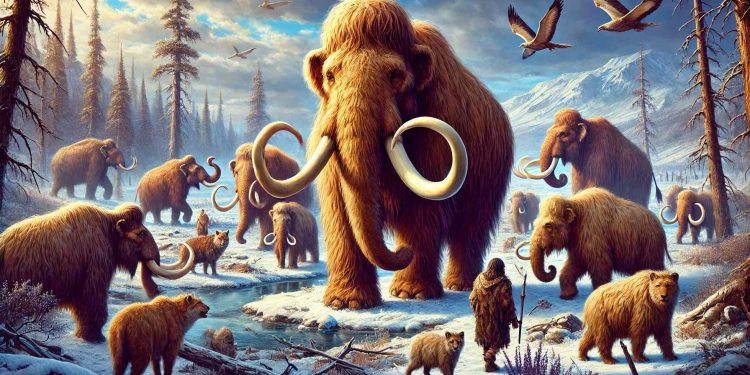In a groundbreaking achievement in conservation science, Dr Parwinder Kaur, an Indian-born scientist based in Australia, is paying a key role the global effort to bring extinct species like the woolly mammoth back to life. Her work as part of a collaborative team decoding the genome of a 52,000-year-old mammoth has opened new frontiers in the quest to understand and possibly reverse extinction.
Dr Kaur, a molecular biologist at the University of Western Australia (UWA), is the founding Director of DNA Zoo Australia, which is part of a global consortium originating from Houston. Her team recently contributed to reconstructing the DNA structure of a woolly mammoth using remarkably well-preserved skin and hair samples. This achievement marks a significant milestone, laying the groundwork for de-extinction—a concept that has captivated scientists and conservationists alike.
A Vision for Conservation
Dr. Kaur’s work is not merely about resurrecting extinct species; it is deeply rooted in advancing conservation biology. By decoding the complete genome of long-extinct creatures, the global team aims to understand the genetic adaptations that allowed these species to survive harsh environments. This knowledge could be instrumental in protecting endangered species facing similar challenges today.
“This research is about creating a blueprint for biodiversity restoration,” Dr Kaur said in an interview. “If we can understand how species like the woolly mammoth adapted to changing climates, we can apply those lessons to conserve species on the brink of extinction.”

A Step Toward De-extinction
The woolly mammoth, which roamed the Earth during the Ice Age, disappeared roughly 4,000 years ago. Dr Kaur’s team achieved a remarkable feat by reconstructing its chromosomes—the first time such a detailed genome has been assembled for an extinct species. This development is a crucial step toward potentially bringing the mammoth back to life through advanced cloning techniques and gene editing.
The implications extend beyond scientific curiosity. The reintroduction of mammoths to Arctic environments could help restore ecosystems degraded by climate change. For example, mammoths could graze on overgrown vegetation, compact permafrost, and contribute to the balance of tundra ecosystems.
A Global Collaboration
Dr Kaur’s contributions are part of a global collaboration involving geneticists, paleontologists, and conservationists. She was part of the team that put together the first genome for the woolly mammoth, detailed in a study available here. Her efforts have drawn attention to the ethical and ecological dimensions of de-extinction. While some critics question the morality of reviving extinct species, proponents argue that it could rectify ecological imbalances caused by human activity.
Dr. Kaur emphasizes the importance of using such advancements responsibly. “De-extinction is not about playing God,” she explained. “It’s about restoring what has been lost and ensuring that our actions today do not lead to further irreversible damage.”
Potential Impact on Ecology
The revival of extinct species has the potential to transform ecosystems. Reintroducing mammoths, for instance, could help prevent the thawing of permafrost in the Arctic, a significant contributor to global greenhouse gas emissions. By trampling snow and reducing heat absorption, mammoths could play a crucial role in mitigating climate change.
Moreover, the technology used to decode ancient genomes could benefit current conservation efforts. Endangered species, such as the Sumatran rhinoceros and northern white rhinoceros, could gain a second chance through similar genetic interventions.
Challenges and Future Prospects
Despite the promise, significant challenges remain. De-extinction requires sophisticated cloning techniques, extensive funding, and a clear understanding of ecological consequences. Additionally, ensuring public support and addressing ethical concerns will be critical to advancing this work.
Nevertheless, Dr Kaur remains optimistic about the future. “This is just the beginning,” she said. “Our work shows that the impossible can become possible with perseverance and collaboration. Together, we can make a meaningful impact on conservation and biodiversity.”
Dr Parwinder Kaur’s contributions to pioneering research underscore the transformative potential of genetic science in addressing some of the planet’s most pressing ecological challenges. By bridging the past and the future, this collaborative work not only revives ancient wonders but also offers hope for a more balanced and sustainable world.











